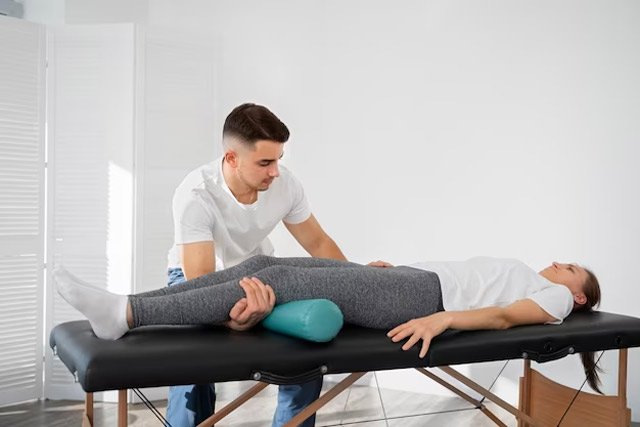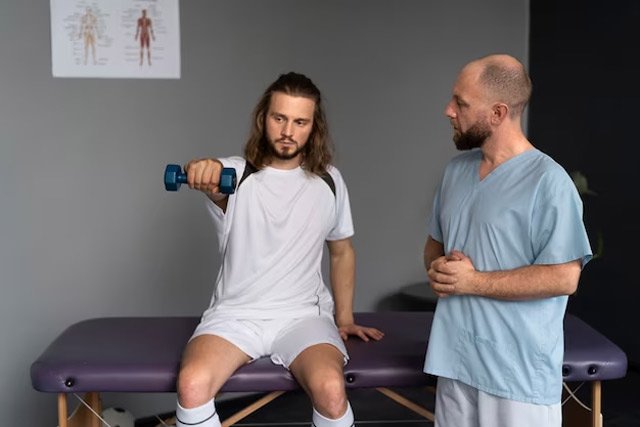Physical Therapy Treatment Table is one of the most important pieces of equipment in a therapist’s arsenal. Whether you run a sports injury clinic or a dedicated physical therapy practice, you want to ensure your patients’ comfort and safety.
Treatment tables provide an adaptable platform for multiple therapeutic interventions. To help you select the best table for your practice, consider these key features:
Patient-Centric Design: Where Comfort Meets Effectiveness

Physical therapy tables are more than just furniture; they’re integral equipment in any practice. Patients rely on these tables for safe, comfortable treatment sessions that help them recover from injuries and return to the game. As such, the best treatment tables are crafted with patients’ needs in mind. They offer a customizable layout that supports therapists in delivering effective treatments.
The most versatile physical therapy treatment tables are expertly crafted to accommodate many patient body sizes and conditions. This adaptability enables practitioners to treat a diverse clientele and ensures patients have an optimal experience. Most treatment tables come with a wide height range and customizable inclination, allowing therapists to adjust the positioning of the patient. Additionally, some models feature a non-skid base that further enhances stability, particularly during dynamic treatments.
Another key aspect to consider when choosing a treatment table is its weight capacity. The most durable tables are made of strong materials that can withstand the stress and force exerted daily. This robust build instills confidence in both practitioners and patients, reducing the risk of injury or damage to the equipment.
Choosing the right number of physical therapy tables is vital for any clinic or practice. Too few tables can make the room feel cramped, while too many tables will result in unused space and an unprofitable investment. Consider the number of clients you expect to see regularly when selecting your treatment table. This will help you determine how many sections the table should have and whether or not to choose a motorized option.
Adaptability: A Therapist’s Swiss Army Knife

A physical therapy treatment table is a versatile tool that supports multiple therapeutic interventions for therapists in healthcare settings. It is an indispensable tool for physiotherapists, chiropractors, athletic trainers, and sports rehabilitation specialists to perform their professional duties.
Unlike massage tables, physical therapy treatment tables have additional features that cater to the unique needs of patients during treatments. They feature adjustable sections, backrests, armrests, and face cradles for comfort and positioning. They also offer easy access controls for adjustment with a single lever under the leg section. This allows therapists to perform multiple techniques without reaching the patient and risking getting injured or distracting them from their session.
The versatility of a physical therapy treatment table enhances the effectiveness of the practice. It empowers practitioners to enhance patient outcomes with various treatments for a diverse clientele. The adjustable height accommodates patients from pediatric to geriatric, while the incline feature allows customization for specific therapeutic interventions like postural drainage, spinal manipulation, and muscle energy techniques.
Another important aspect of a physical therapy treatment table is its heavy-duty construction that withstands rigorous use in a busy clinic environment. The sturdy build instills confidence in practitioners and patients, helping to foster a collaborative relationship. The table’s weight capacity of up to 900 lbs. ensures it can handle even the most challenging patients.
Physical therapy treatment tables are available in a wide variety of sizes and upholstery colors to suit the aesthetics of your clinic. Some are even foldable, making them more portable and easier to store. Space constraints in many healthcare facilities may be a key consideration when choosing a treatment table.
Comfort: The Cornerstone of Healing

Treatment tables are an essential tool for physical therapists and provide patients with a comfortable platform to work on their healing. This is important because patient comfort can help boost compliance, improving outcomes and results for the athlete.
Many physical therapy tables feature a sturdy build that can support the weight of various patients, including those who may be obese or overweight. Some models can even accommodate up to 700 lbs. In addition, some tables feature a non-skid base for stability and added safety during treatment sessions.
In addition to a sturdy frame, many treatment tables also feature ergonomically designed controls. Placing a slight pressure on the switch activates some soft-touch switches. You can then move the switches in various directions to change the height of the table. This can be helpful for athletes who may have trouble with movement or need to hold the position for extended periods.
Many treatment tables also feature a durable upholstery material that is easy to clean. This makes it simple to keep the table looking its best, which helps ensure it stays sanitary and comfortable for every patient. This material can also be disinfected to help prevent the spread of infections between patients.
Durability: The Backbone of Your Practice

The treatment table is a fundamental component of many physical therapy practices. When selecting the right table for your practice, it is important to consider durability. A durable table will support the patient and any equipment or clothing that the patient may be wearing. It will also be able to stand up to repeated usage from patients. If you want a durable table that will withstand rigorous use, consider buying one with a metal or composite frame. This will ensure that the table can handle the pressure of multiple people and prevent it from snapping or collapsing.
In addition to being durable, physical therapy treatment tables should also be easy to maintain. Ensure your treatment table has an accessible battery compartment for quick charging. Also, check for a breathable surface to prevent skin irritation and make cleaning easy for the next patient.
When choosing a new physical therapy table for your practice, you must consider the number of patients you can comfortably accommodate daily. You will also need to consider whether you can accommodate your patients’ special needs. By doing so, you can select the best medical treatment table for your needs.
Safety: Building Confidence in Every Session

Treatment tables must be sturdy enough to withstand the daily stress and force that physical therapists apply during their treatments. Their frames should be made from hardwood, bamboo, or powder-coated aluminum to provide a long life span with minimal maintenance needs. They should also be capable of handling between 300 and 900 pounds, ensuring they can accommodate the heaviest patients.
Some types of therapy require the therapist to be able to move the patient, requiring the table to be adjustable in height and angle. These features can help practitioners better manage their work and facilitate the performance of many different treatment techniques.
In addition to the ability to adjust the height of a treatment table, some models offer the option to incline it. This enables practitioners to conduct more complex treatments on their clients, such as spinal mobilization/manipulation and muscle energy techniques.
Depending on your clinic’s type of physical therapy, some tables may come with head and foot adjustment capabilities. This allows you to position the patient more ergonomically for certain procedures, especially if your athletes are in wheelchairs.
Some tables have a hand crank to adjust the surface height, aiding tasks on clients’ arms and shoulders. This benefits sports medicine therapists working with immobile, injured athletes. Proper patient positioning is crucial for strength and power tests, indicating athletic potential. These measurements assess injury recovery and guide the timing of an athlete’s return to competition.




